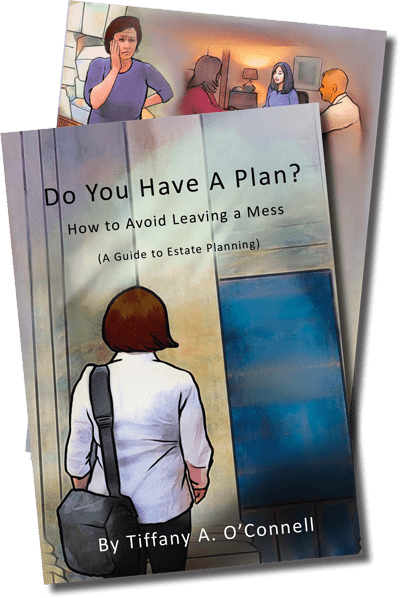 Legacies
Legacies
By William J. Brisk, CELA
When you help clients define their own legacies, you can learn about the legacies you want to leave behind.
We strive, as Elder Law attorneys, to enhance clients’ security and comfort. We also seek to maximize their autonomy. And, we work to see that their needs are met efficiently and humanely. I’ve been noting recently that an overriding concern of many clients goes beyond security, comfort, and autonomy. They want to leave legacies that justify their lives. Increasingly, that’s not just a professional interest.
The concern for legacies is as real as any material desire. It permeates Leo Tolstoy’s 1886 novella, The Death of Ivan Ilych. As we age, or, more particularly, as we perceive death more clearly, concern for leaving a lasting legacy surges.1
Lee Eisenberg’s The Number attracted a following among people who recognized that they have only a limited time to earn enough to save for their retirement. Yet, in the midst of his sound investment advice, Eisenberg detours slightly, recognizing that financial goals change as we age. In our 30s, 40s, and 50s, we work to acquire things.2
Much of what we do as Elder Law attorneys is to increase the likelihood that our clients will leave legacies to loved ones. While a primary purpose of “Medicaid planning” is to ensure appropriate care for our clients during their remaining years, collaterally it often results in clarifying and ensuring their tangible legacies. The desire to leave a legacy begins early, but often becomes an imperative as we age, or more precisely as we begin to realize that our days are numbered.
Robert Butler, one of the founders of modern gerontology, had a similar observation. “In true maturity one thinks beyond two generations. All forms of legacy should be encouraged in our culture as should the growth of an ethic of the future, a troth to the generations to come.”3
The process, put simply, is shifting attention from acquisition to distribution or as Margaret Newhouse calls it “from success to significance.”4 Even more poetically, Thomas Cole observes in his cultural history of aging in America that with longevity comes the need to “free [ourselves] from [our] preoccupation with the loss of youthfulness and discover the ‘gifts reserved for age,’” by which he means using knowledge and wealth to assist the next generations.5
Mitch Albom concludes his best-selling book with a particularly poignant metaphor: “A little wave suddenly realizes, in the midst of enjoying wind and fresh air, that ‘we’re all going to crash. All of us waves are going to be nothing? Isn’t it terrible?’ A more mature wave responds: ‘No you don’t understand. You’re not a wave, you’re part of the ocean.’”6
Helping Clients Define Their Legacies
Legacies take many forms. Some are tangible, but often the most precious and enduring are not. We spend much of our time with clients trying to understand how they want their wealth distributed, patiently explaining that Wills don’t take care of jointly owned, entrusted, or designated assets and that some coordination is needed to avoid distortions that might occur by ignoring how taxes and administrative expenses might be apportioned.
We also deal with tangible assets such as art, furnishings, jewelry, or book collections. But in the process, we often choose one of two extremes, granting extraordinary authority to a personal representative to determine who gets what or, conversely, specifically designating in a Will or accompanying memorandum, each item’s ultimate destination — unless a designated beneficiary does not survive or chooses not to pick up the item. Another way is outlined in a brilliant first novel, The Grab,7 that centers on a family’s tradition of distributing its treasures to the next generation of women.
Although seemingly important to clients, fewer estate plans include gifts for causes, endowing a pet project or activity so that it can meet or even broaden its mission.
Many of us want to bequeath memories in the hopes that loved ones will think of us even after we’re gone. Meg Newhouse’s “Legacy Project” coaches people on how to provide “legacies of the heart,” by assembling scrapbooks, writing memoirs, delving into family histories, preserving family recipes, creating art, or even preparing ethical wills to convey not material but spiritual values.8
Finally, and not to be forgotten, are our daily legacies, the gifts of spirit we customarily bestow on others through smiles, courtesy, encouragement, and, especially, expressing sincere gratitude. Such random acts of kindness may generate immediate returns.
What can we do, as attorneys, to help our clients focus on their legacies? Even when discussing serious medical issues or other challenges with clients, I pause and ask, “What do you enjoy doing?” Responses vary, of course, but in enough cases to justify such a personal question, we often touch on something that can be done. It may be travel that’s been on hold for years for lack of a companion or to settle a long-term dispute, or to spend more time with a close friend, or to develop a reading program.
The Legacy You Will Leave Behind
What can working with clients teach us about the legacies we wish to leave behind? My first observation is that if you already ask clients such personal questions, try to answer them yourself. You may be surprised by the private dialog that follows. Second, if you have saved enough to live comfortably for the rest of your life, consider making gifts now rather than postponing them to your death. Friends, family, and especially charities will express profound gratitude and you will benefit from watching your gift put to use.
Rather than waiting for a Will to be probated, after you’re gone, consider making some gifts now. A client, who knew she was dying from pancreatic cancer, filled her last weeks with visits from family and friends. She arranged for a social secretary to plan each visit. When I visited, June brought out a lime green teapot and said, “I want you to have this, to remember me.” We still have it and remember June almost two decades later.
Finally, one’s legacy includes your contribution to organizations. One should be dedicated to any position in which you serve. But it is also necessary to select worthy successors. As past Editor in Chief for NAELA News and NAELA
Journal, I had a hand in selecting the next Editors in Chief — Ruth Ratzlaff for NAELA News and Charles Golbert for NAELA Journal — because I knew they would do better than I. And they did.
A fringe benefit of being an Elder Law attorney is that we can preview, through our work with clients, our changing desires as we age. Learn from your experiences, helping the next client leave his or her legacies — and, possibly, clarifying your own legacies.
Citations
- The notions propagated by John Stuart Mill and Charles Darwin, that, to survive, man must be selfish (i.e., we strive to “obtain the greatest amount of necessaries, convenience, and luxuries, with the smallest quantity of labor and physical selfdenial”) are refuted by recent studies on altruism. In her forthcoming book, What Makes a Hero? The Surprising Science of Selflessness, to be published by Current,
Elizabeth Svoboda reviews research by Jordan Grafman and Jorge Moll that
shows that our brains respond positively to our own altruistic acts. “Hard-Wired Giving,” Wall Street Journal, C1 (August 31, 2013).
- “Whenever I ask people what they’re working so hard to achieve they almost always answer in terms of beach houses and golf rounds, and trips to wonderful places.” Lee Eisenberg, The Number, 2006 at 226. Attributing this observation to George Kinder, a financial planner, Eisenberg notes that these are “Level One
Aspirations,” but eventually, at some stage in one’s life, the motivations change to Level Two Aspirations “which fewer people express but you still hear a lot [and they] have to do with unfulfilled passions: read the classics, open a bed-andbreakfast, grow grapes. At 226-27. Later, a sense that’s “shared by more people than let on…. [is replaced by] giving something back, leaving a legacy, filling a void.” At 227.
- Robert N. Butler, The Longevity Revolution: The Benefits and Challenges of Living a Long Life, 2008 at 388.
- Life Planning Network, “Living in 3D – Enrich Your Life With Purpose, Legacy, and Spirituality,” Live Smart After 50! The Experts’ Guide To Life Planning For Uncertain Times, 2012 at 142.
- Thomas R. Cole, The Journey Of Life, 1992, at 242.
- Mitch Albom, Tuesdays With Morrie: An Old Man, A Young Man, And Life’s Greatest Lesson, 1997, at 181-182.
- Maria Katzenbach, The Grab, 1978.
- Her very helpful website is passionandpurpose.com.
William J. Brisk, CELA, is a NAELA Fellow and a past member of the NAELA Board of Directors. The Law Office of William J. Brisk, Newton Center, Mass., has been planning, advocating, and litigating on behalf of elders and their families for more than 30 years.

